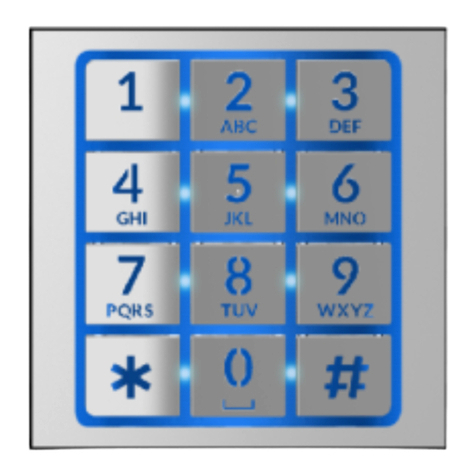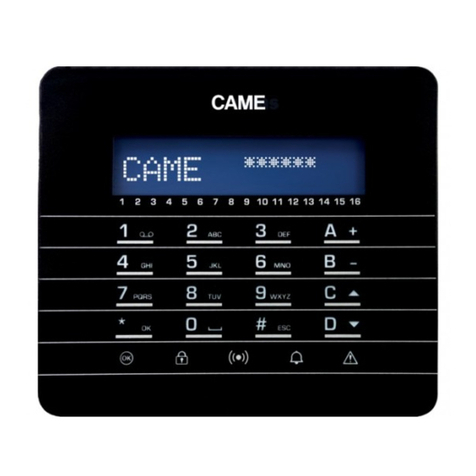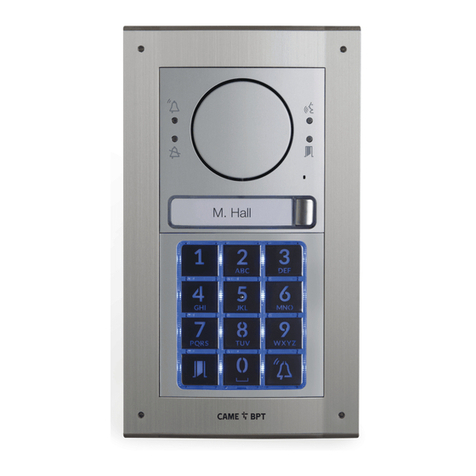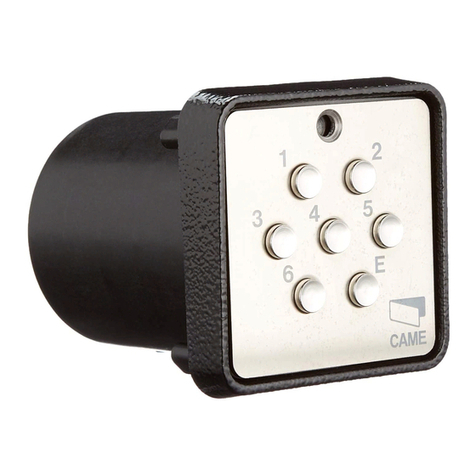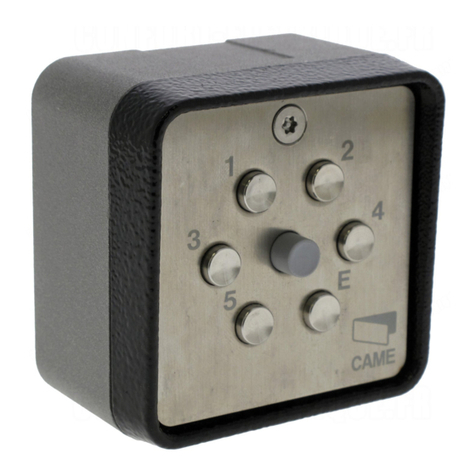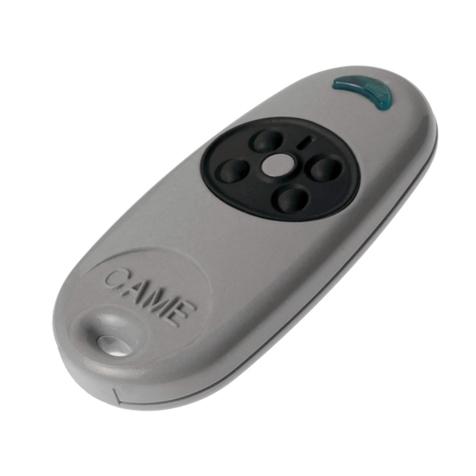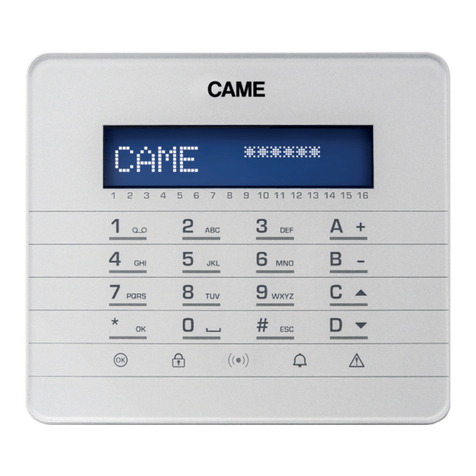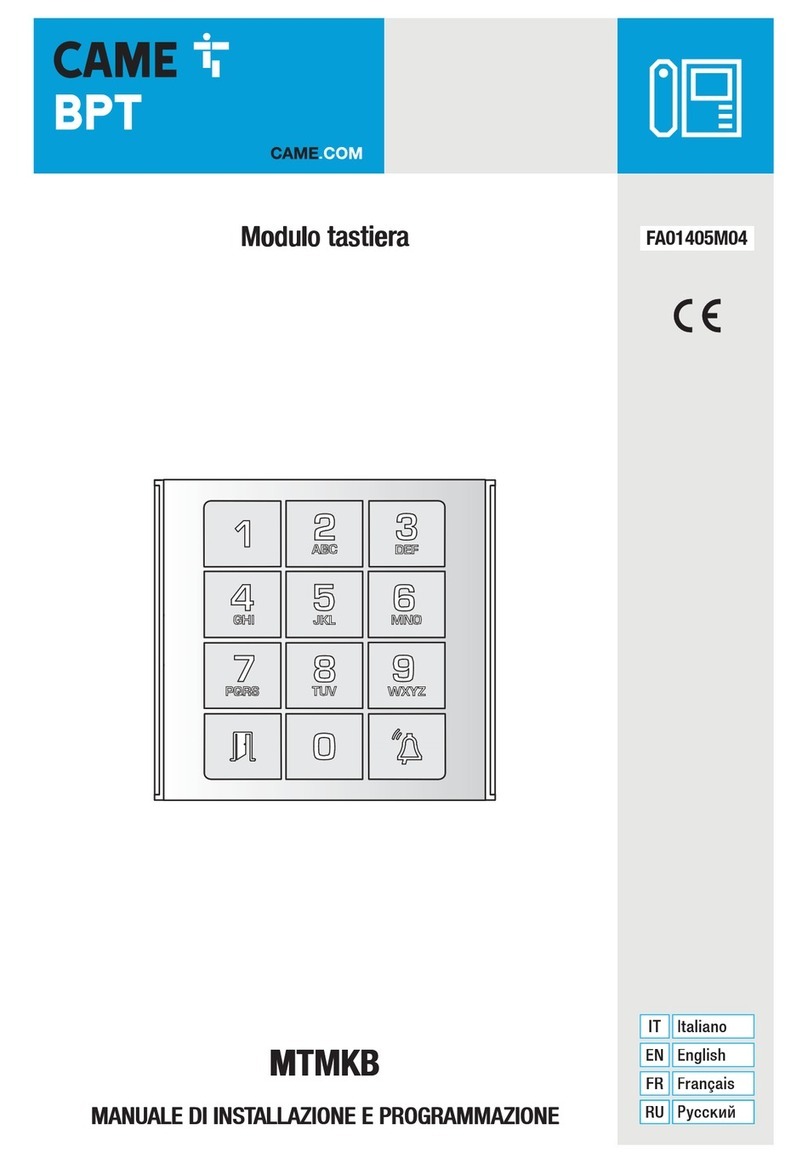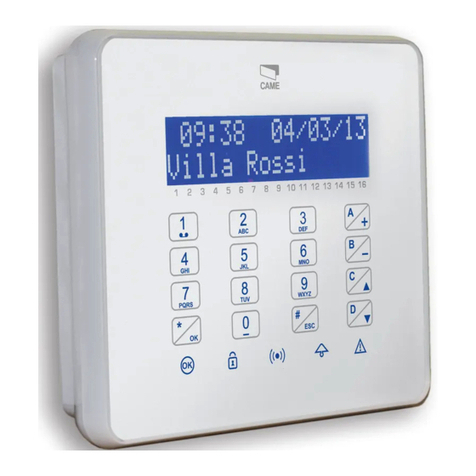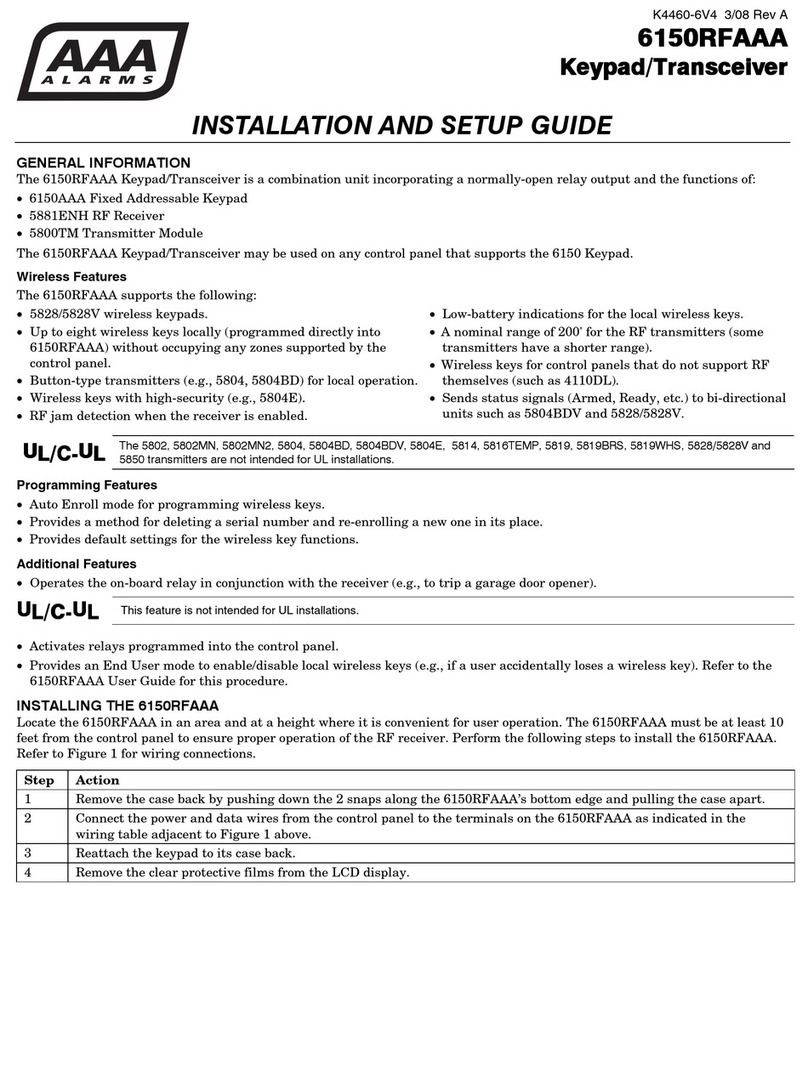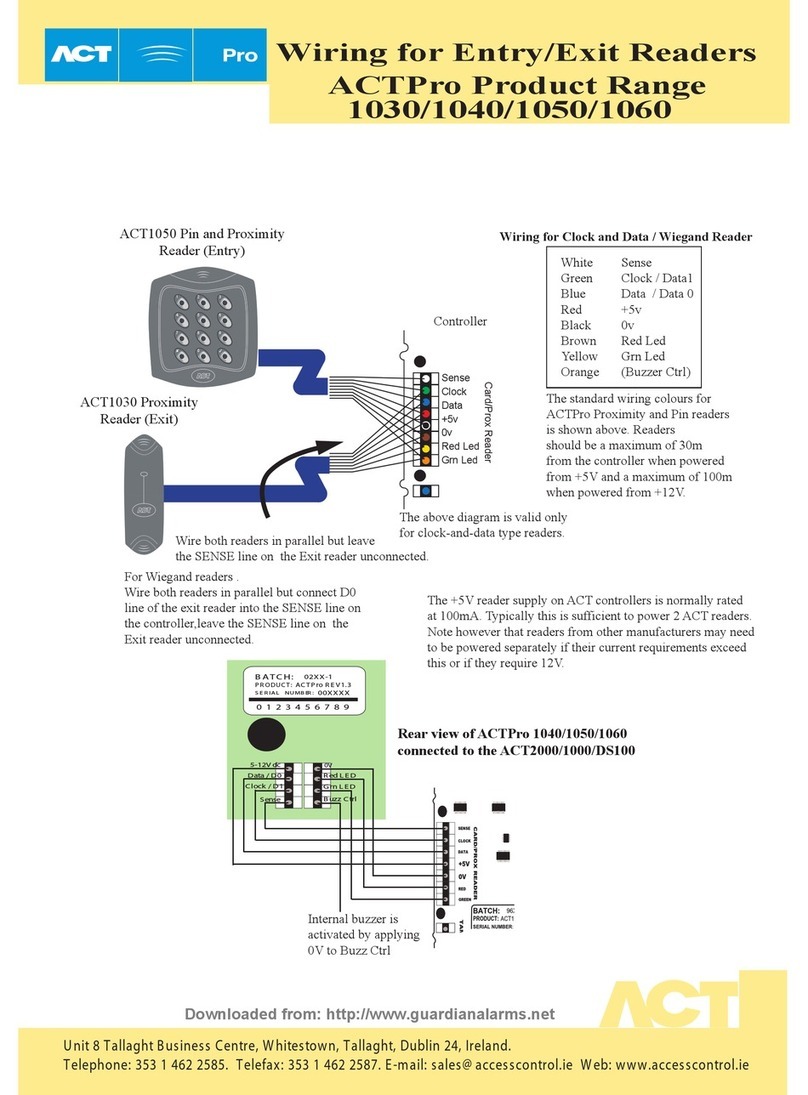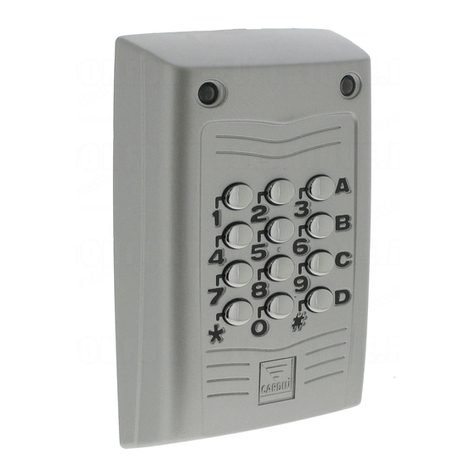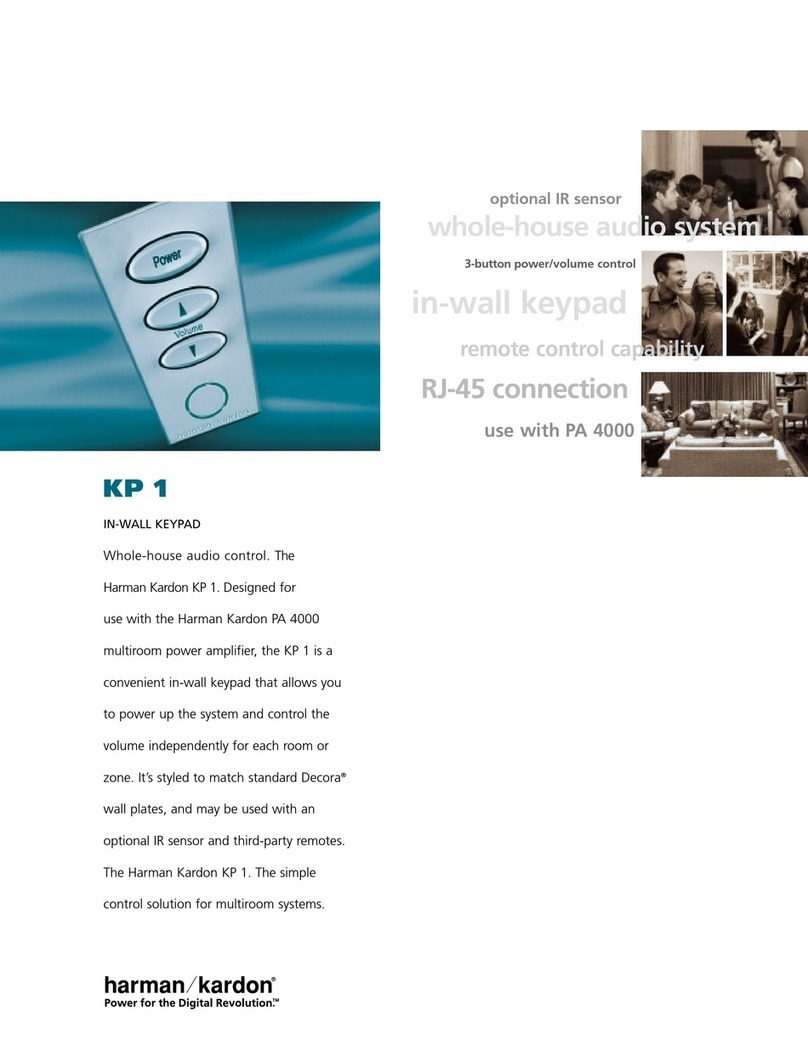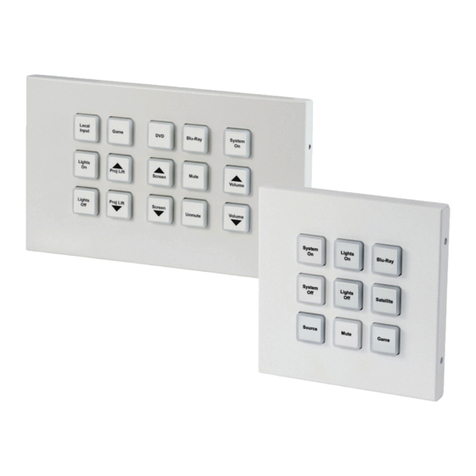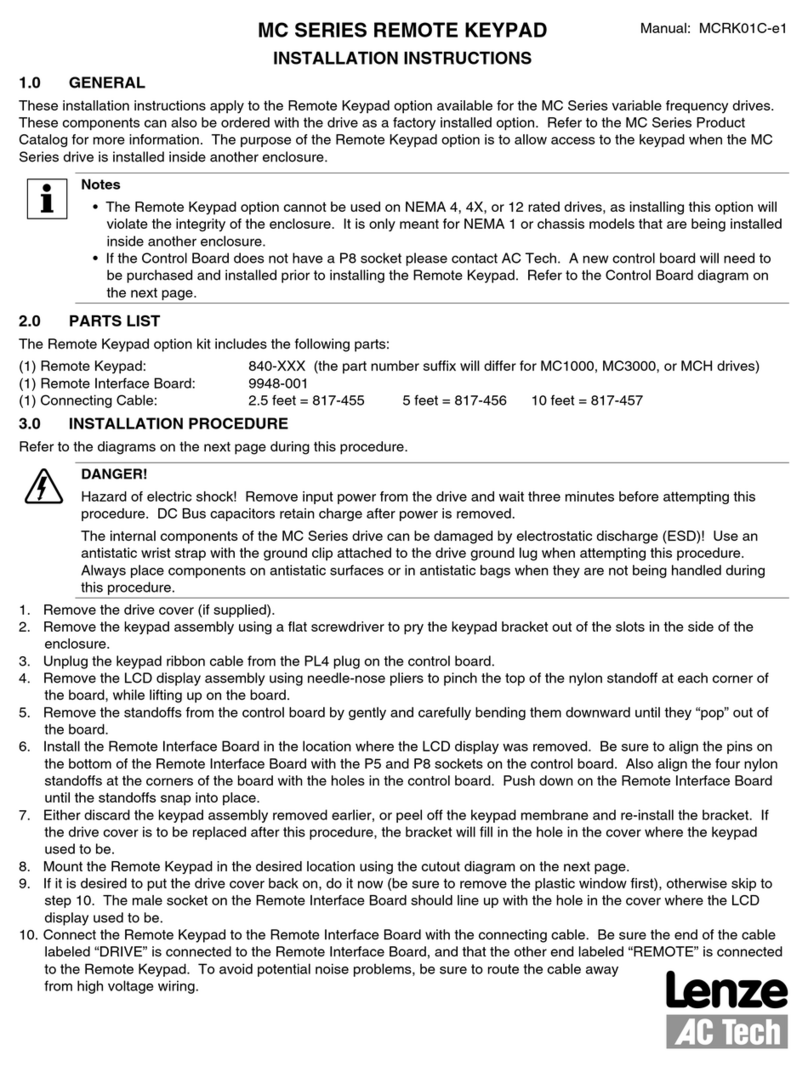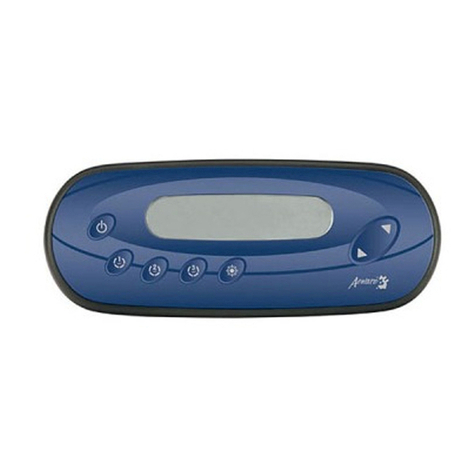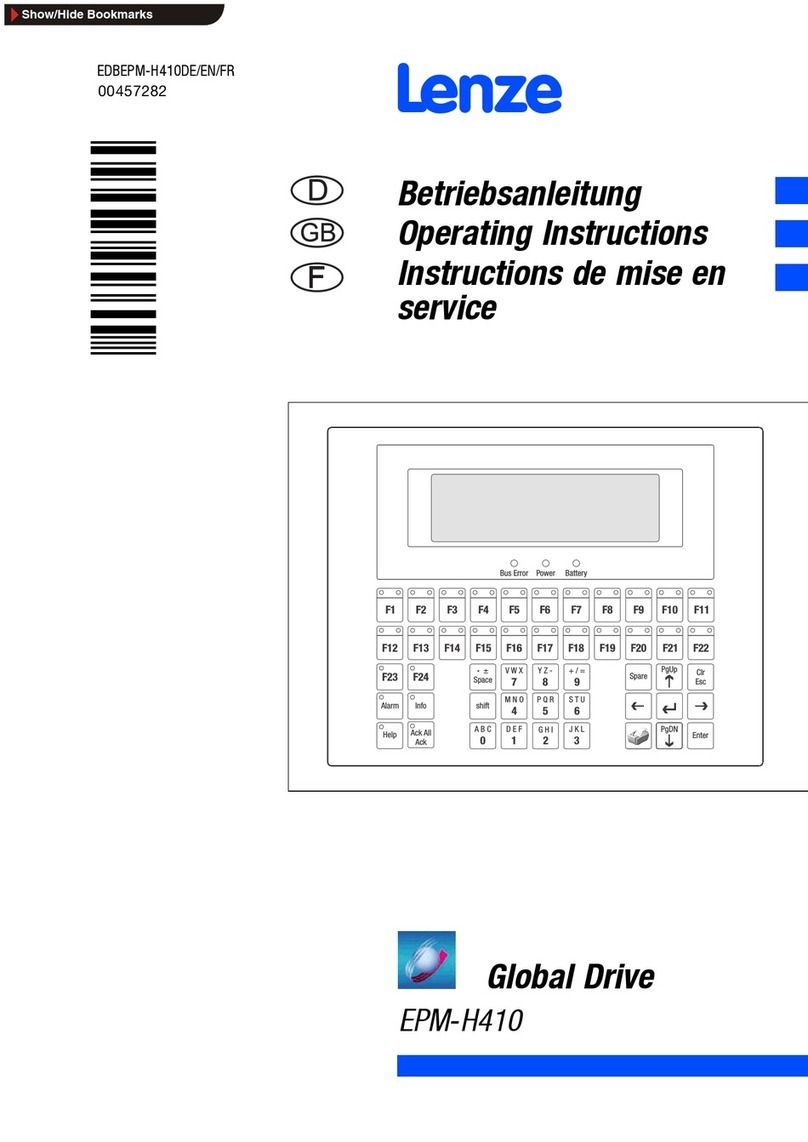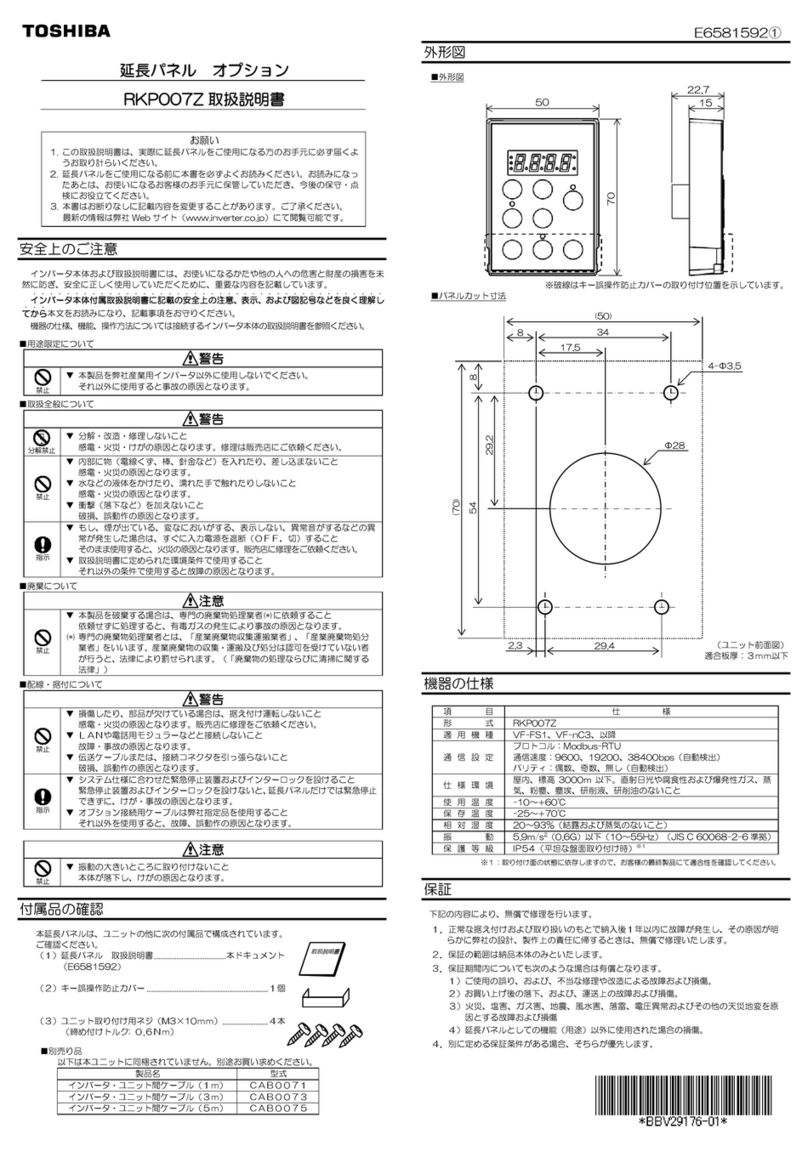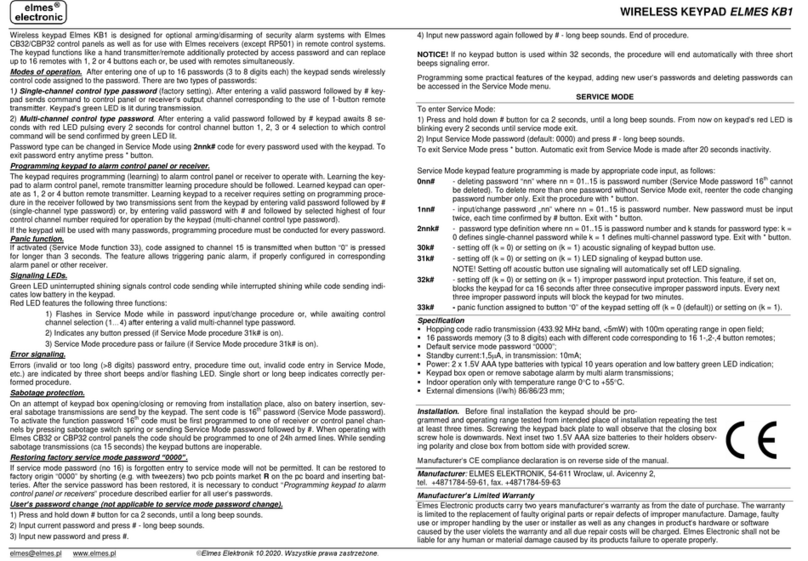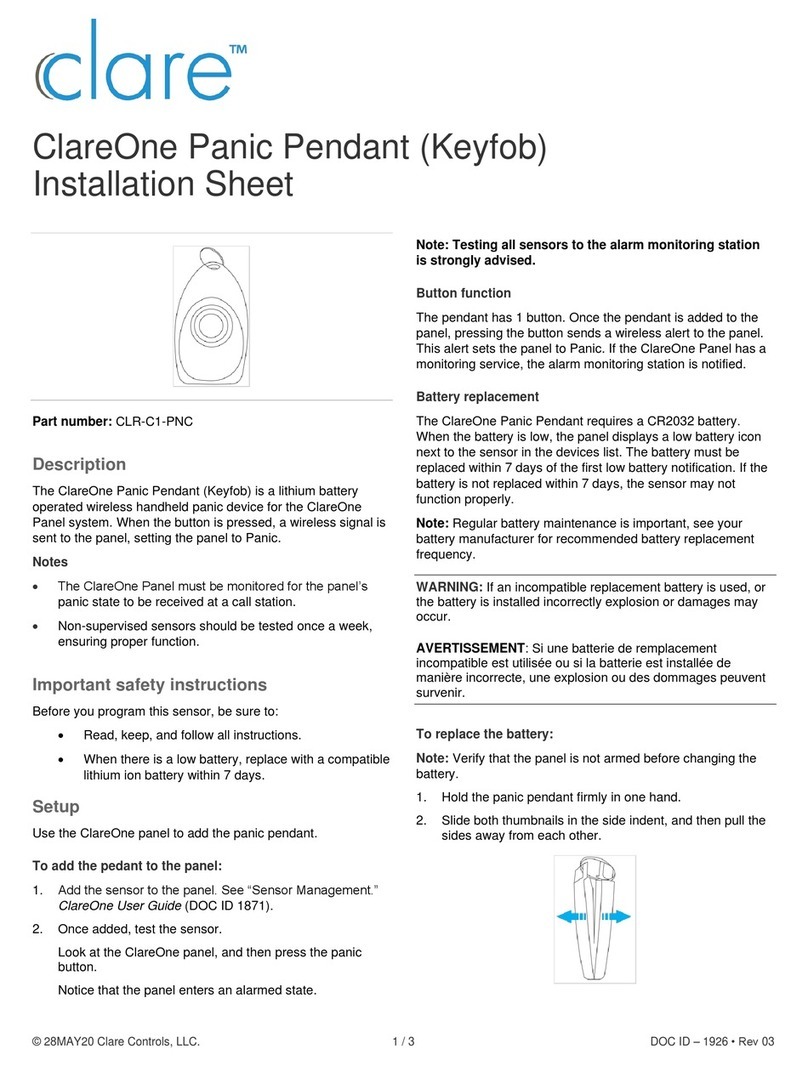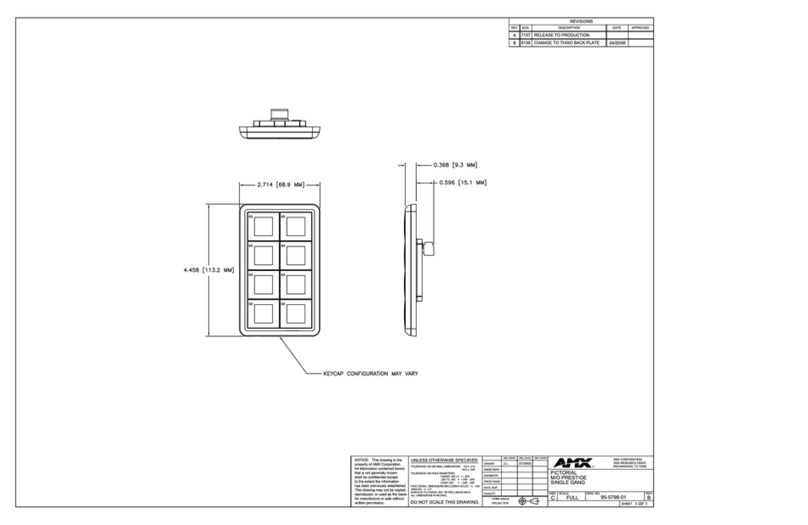Herts. HP2 7DA
For Versions B , D & F Only* 10 : OUTPUT 3 (NPN Transistor Open Collector Output)
An NPN transistor open collector output controlled by the Group 3 User PINs for Output 3. It has the
maximum power rating of 24VDC/100mA sink. It is equivalent to an N.O. (Normally Open) terminal
referring to ground. It can be used to drive small power device, such as a relay or a low power control
point of other equipment. This output point is programmable for Start/Stop (toggle) mode or Momentary
timing mode. See programming Location 53 for the details.
For Version B , D & F Only* 11 - 12 : DOOR BELL (Output Relay Contact for Door Bell)
It is a Normally Open (N.O.) relay dry contact with maximum rating of 24VDC/1Amp. It is prepared as a
triggering contact of a low voltage door chime. The contact point keeps close as long as the bell button
on the keypad is pressed.
13 : “K” OR “A” O/P (Keypad Active Output or Alarm Output)
An NPN transistor open collector output with the maximum power rating of 24VDC/100mA sink. It is
equivalent to an N.O. (Normally Open) terminal referring to ground. It can be used to drive small power
device, such as a relay or a low power control point for other equipment. This output point is selectable
to give Keypad Active Output or Alarm Output via the Selection of the “K or A” jumper.
a) Keypad Active Output (“K”) --- It switches to (
-
) ground for 10 seconds on each key touch. It
can be used to turn on light, CCTV camera, or buzzer to notify a guard. See Application Hints for
more information.
b) Alarm Output (“A”) --- It switches to (
-
) ground while Alarm occurs in order to trigger external
alarm to give notication at remote location.
14 : DU OUT (Duress Output)
An NPN transistor open collector output with the maximum power rating of 24VDC/100mA sink. It
is equivalent to an N.O. (Normally Open) terminal switching to (
-
) ground after the Duress Code is
entered. Use it to trigger an alarm zone of a security system, or turn on a buzzer to notify a guard.
15 : (
-
) GND (Common Ground)
A grounding point of the keypad that is common to terminal 2.
16 : DOOR SENS N.C. (Door Position Sensing Input -- Normally Close)
A Normally Closed (N.C.) sensing point referring to (
-
) ground, with the help of a normally closed
magnetic contact monitors the open or close status of the door. It initiates the following functions for
the system. Connect it with jumper to (
-
) Ground if not used.
a) Door Auto Re-lock
The system immediately re-locks the door after it is re-closed before the end of the programmed
time for output 1. It prevents unwanted “tailgate” entry.
b) Door Forced Open Warning
The keypad generates “door forced open” warning and alarm instantly once the door is forced to
open without a valid user PIN or egress button. The warning lasts as long as the time programmed
(1
-
999 sec). It can be stopped with an User PIN for output 1 at anytime. See programming Location
80 for the details.
c) Door Propped-up Warning
The keypad generates propped-up warning beeps (does not activates alarm output) while the door
is left open longer than the allowable time programmed. The warning will last as long as the door is
open until re-closed. See programming Location 81 for the details.
d) Inter-lock Control
The inter-lock control output always goes to (
-
) while the door is open, which gives signal to
disable the other keypad in the inter-lock system. See the Inter-lock terminal description for more
information.
e) Door Opening Alarm
Door Opening Alarm is designed for the emergency door only. It is always given when the door
is opened unless a valid user code or card is used prior to the door is opened. See programming
Location 91 for the details.
17 : O/P 1 INHIBIT N.O. (Output 1 Inhibit Control Input – Normally Open)
A Normally Open (N.O.) sensing input point for controlling the Output 1, with this terminal connecting to
(
-
) ground, the Egress Button, the group of User PINs for Output 1 are all disabled. It is prepared
mainly for the cross wire connection with the “Inter-lock O/P” point on the other keypad in an Inter-lock
system.
NOTE: The inhibit function does not govern the Duress Codes and the Super User Codes. They are
always valid.
18 : INTER-LOCK O/P (Inter-lock Control Output)
An NPN transistor open collector output with the maximum power rating of 24VDC/100mA sink. It is
8
APPLICATION EXAMPLES
1) BASIC WIRINGS OF A STAND ALONE DOOR LOCK
NOTE:
Connect the 1N4004 as close as possible to the lock in parallel with the lock power terminals of the
lock to absorb the back EMF to prevent it from damaging the keypad. The 1N4004 is not required if
the electric lock is AC operated.
To avoid Electro-Static-Discharge from interfering with the operation of the keypad, always ground
the (
-
) terminal of the keypad to earth.
Always connect DOOR SENSOR terminal to (
-
) ground if not used.
33
